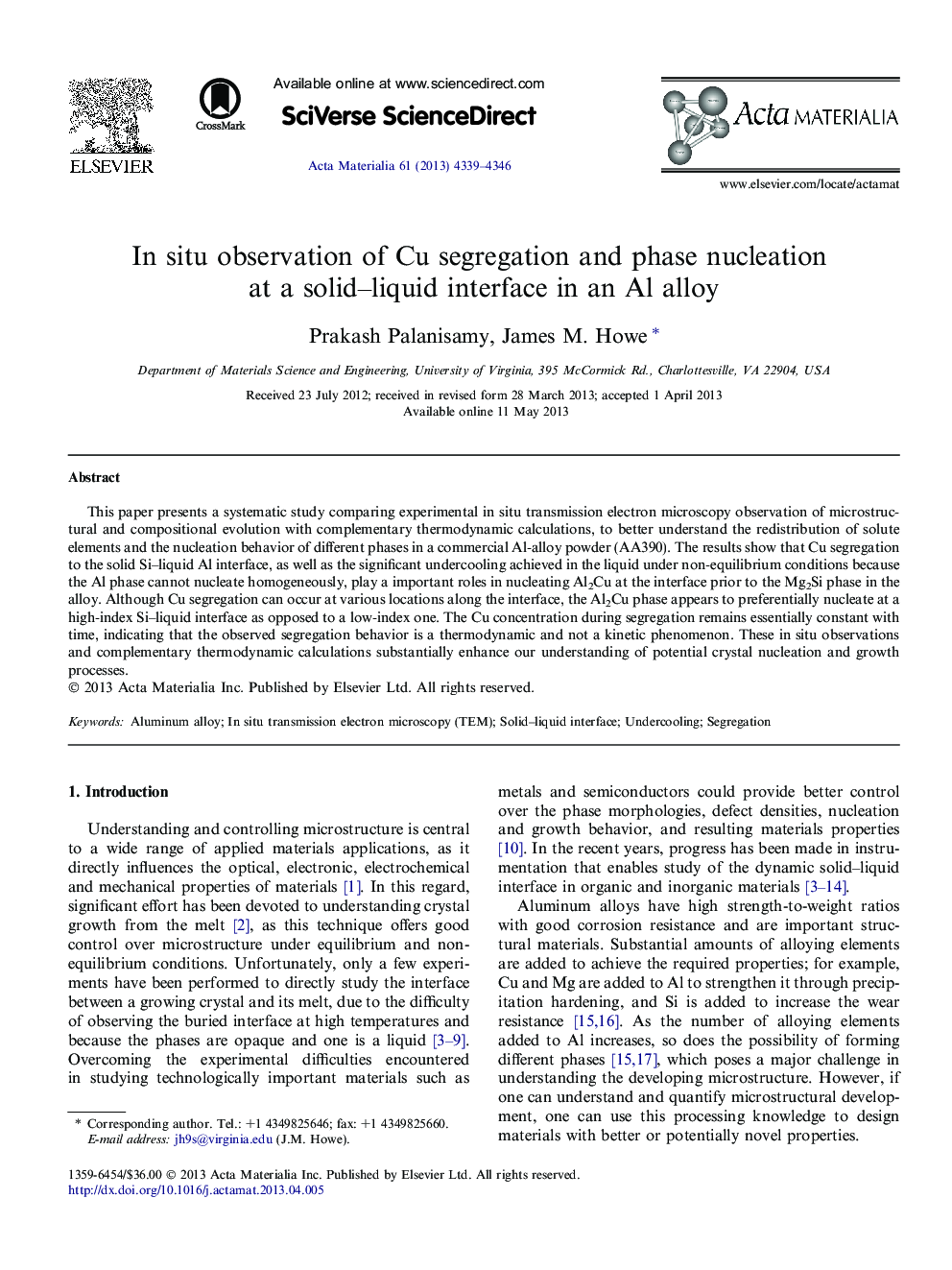| Article ID | Journal | Published Year | Pages | File Type |
|---|---|---|---|---|
| 1446031 | Acta Materialia | 2013 | 8 Pages |
This paper presents a systematic study comparing experimental in situ transmission electron microscopy observation of microstructural and compositional evolution with complementary thermodynamic calculations, to better understand the redistribution of solute elements and the nucleation behavior of different phases in a commercial Al-alloy powder (AA390). The results show that Cu segregation to the solid Si–liquid Al interface, as well as the significant undercooling achieved in the liquid under non-equilibrium conditions because the Al phase cannot nucleate homogeneously, play a important roles in nucleating Al2Cu at the interface prior to the Mg2Si phase in the alloy. Although Cu segregation can occur at various locations along the interface, the Al2Cu phase appears to preferentially nucleate at a high-index Si–liquid interface as opposed to a low-index one. The Cu concentration during segregation remains essentially constant with time, indicating that the observed segregation behavior is a thermodynamic and not a kinetic phenomenon. These in situ observations and complementary thermodynamic calculations substantially enhance our understanding of potential crystal nucleation and growth processes.
